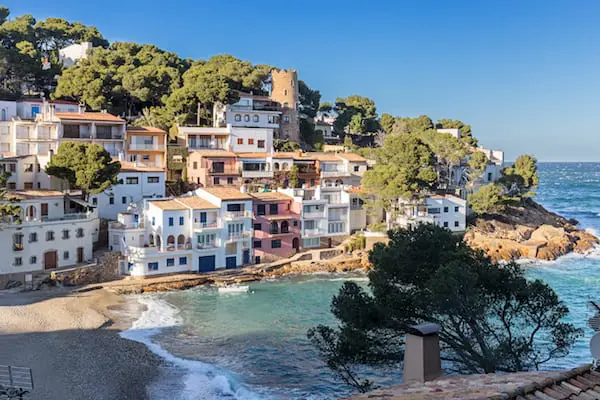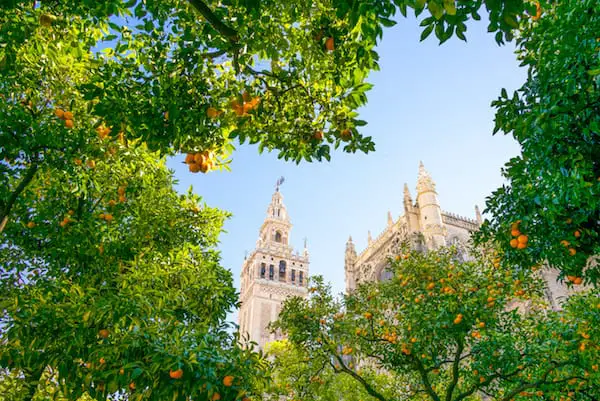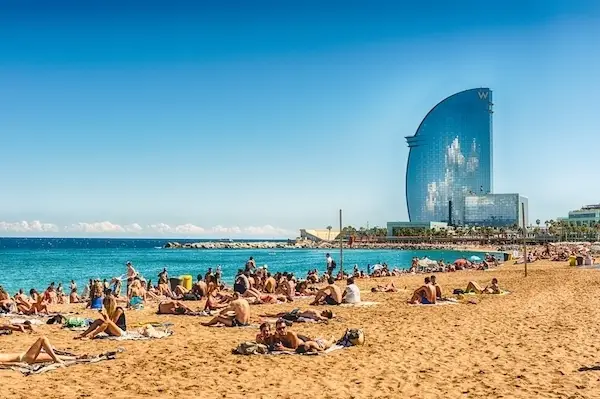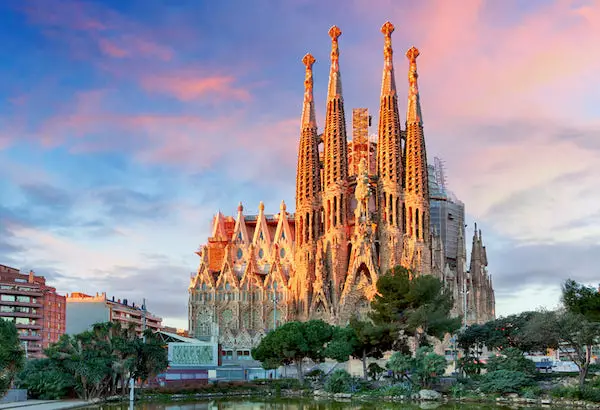*This site contains affiliate links, which means I receive a commission when you buy. See my full disclosure.
If you’re planning to come to Spain for the total eclipse in 2026, it’s time to start preparing! I’m already here in Spain, and it won’t be hitting this region apparently. If you want to see where it will hit, it will hit the middle of section of Spain, diagonally and part of the islands.
How I’m Preparing for the 2026 Total Solar Eclipse in Spain (and How You Can Too)
On August 12, 2026, the sun will hide behind the sun, and most of Spain will stop what they’re doing to look up.
We’re talking a total solar eclipse which will cut a diagonal shadow across the country just before sunset. From Galicia to Mallorca, the sky will dim, birds will hush, and half of Spain will be stuck in the same traffic jam trying to watch it happen.
I live here. I’m not a professional eclipse chaser with a telescope the size of a Vespa — but yes, I’m planning my trip for it. Because if the cosmos is putting on a once-in-a-lifetime show, I’d like a front-row seat… preferably with snacks, shade, and a cold bottle of water.
This is how I’m getting ready — and how you can plan your Spain eclipse trip without losing your mind, your phone signal, or your sense of humor.
Understanding the 2026 Solar Eclipse in Spain
Quick facts:
-
Date: August 12, 2026
-
Type: Total solar eclipse
-
Timing: Around 7:30–8:00 p.m. local time
-
Path of totality: Northern and central Spain — including Burgos, Valladolid, Soria, and parts of Mallorca
-
Visibility: Best with a wide, open western horizon
Weather-wise, August in Spain means heat. The inland plateau (Castile and León) often offers clear skies, while the coast can be hazier but cooler.
How I’m Planning My Eclipse Trip
1. Choosing Where to Go
I’ve narrowed it down to three likely options: Burgos for its medieval skyline and open plains, Soria for quiet countryside and low light pollution, or Mallorca for cinematic sea views at sunset.
My main rule: go somewhere with good food and good vibes, not just good visibility. A perfect totality isn’t much fun if you’re watching it next to a gas station in 40°C heat.
2. Booking Accommodation Early (As in Now)
Spain loves an event — and this one will turn normally sleepy towns into full hotels.
Look into:
-
Paradores: historic hotels in castles and monasteries (Burgos, Sigüenza, Soria)
-
Casas rurales: small country homes with charm and chickens
-
Vineyard hotels: La Rioja or Ribera del Duero — because wine pairs beautifully with celestial events
Book something cancellable (in case of clouds), and double-check that your room actually faces west.
3. Timing the Trip
The eclipse falls just before Spain’s biggest holiday week — August 15 (Fiesta de la Asunción). That means fireworks, festivals, and a lot of closed shops.
Plan for crowds, traffic, and a bit of glorious chaos. It’s Spain in summer — if you can’t beat the fiestas, join them.
4. What to Pack
Think “Eclipse Survival Meets Spanish Summer.”
-
ISO-certified eclipse glasses (ISO 12312-2)
-
Water bottle, hat, sunscreen — hydration is non-negotiable
-
Offline maps (Google or Maps.me)
-
Cash: some rural bars still don’t take cards
-
Snacks: because totality is brief but hunger is eternal
Potential Disruptions to Prepare For During the August 2026 Total Solar Eclipse in Spain
Spain will handle this beautifully… and chaotically. Here’s what to expect — and how I’m preparing.
Travel & Logistics
Traffic jams and road delays: Leave early, bring snacks, and download your playlists.
Fuel shortages: Fill up the day before. Rural gas stations may run dry.
Air travel delays: Expect airport congestion in Madrid, Bilbao, and Palma.
Weather & Environment
Heat: Inland areas can hit 40°C. Bring water, shade, and patience.
Wildfire risk: Follow local fire bans — no open flames or BBQs.
Temperature dips: Expect a brief 5°C drop during totality.
Tech & Power
Cell signal drops: Download maps and carry cash.
Power grid strain: Solar dips could affect EV chargers. Charge early.
Crowds & Safety
Eye injuries: Use only ISO-certified glasses. Regular sunglasses don’t count.
Overcrowded facilities: Pack your own water, wipes, and trash bags.
Emergency delays: Small hospitals may be overloaded. Know where the nearest one is.
The Payoff: Why It’s Worth It
Because for a few minutes, Spain — famous for noise, color, and motion — will fall completely silent.
The light fades. The temperature drops. The world holds its breath.
Whether you’re in a vineyard, on a cliff, or standing outside a bar with strangers who suddenly feel like family, you’ll remember that minute forever.
The sun will return. The traffic will resume. But for that brief, shadowed heartbeat of time — you’ll see Spain differently.
Photo suggestion: Silhouette of a small Spanish town under eclipse light, or a vineyard at dusk.
FAQs About the 2026 Solar Eclipse in Spain
1. When and where can I see the total solar eclipse in Spain?
On August 12, 2026, around 7:30–8:00 p.m., the total solar eclipse will cross northern and central Spain, including Burgos, Valladolid, Soria, and Mallorca.
2. What’s the weather like in Spain in August?
Hot and dry inland (30–40°C), slightly cooler on the coast. Expect clear skies but prepare for heat.
3. Can I see the eclipse from Madrid or Barcelona?
You’ll see a partial eclipse, but not totality. For the full experience, travel 2–3 hours north or west from Madrid.
Keep Exploring
Planning your Spain eclipse trip? I’ll be sharing routes, stays, and updates as 2026 gets closer.






